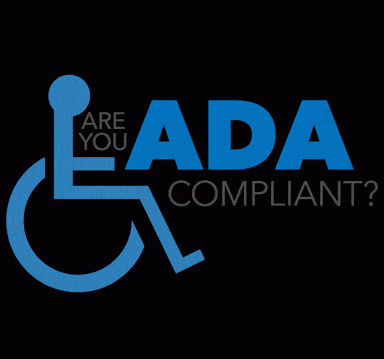
How to make a website ADA compliant?
It is very likely that you have recently received some inquiries and solicitations regarding ADA (Americans with Disabilities Act) compliance. Recently users have been going as far as engaging in lawsuits with companies who’s websites are not ADA compliant.
We are always there to give you solutions. But before answers, first let us address some questions that might be going through your mind:
- First and foremost is the basic one- What is ADA? Why do I need to make my website compliant to ADA?
- Are there any costs involved in making my website compliant to ADA?
- Would noncompliance have any adverse impact on my website?
- Does ADA compliance come with any secondary benefits for me?
- How do I make a website ADA compliant?
Since this involves the understanding of the law. We will address these questions thoroughly.
Here you go,
- Firstly, ADA is derived from the Americans with Disabilities Act. Title III of this Act says that businesses and Not-for-Profit service providers must make it easier for disabled people to access the services which a regular client, non-disabled, has. This includes your websites, and that is why it matters to you. For the second part of the question, if you do not make your website ADA compliant, you are committing an infraction, which can leave you in a legal battle.
- Though the law applies to businesses with more than 15 employees, the government suggests that everyone must comply with this law, since it would help in increasing the reach of your business while making the disabled people feel more comfortable.
Are there any costs involved in making my website compliant to ADA?
- The more you search for this question, the more you would get confused. The price or cost of making your website ADA compliant depends upon the size of your website. Since you would have to make changes to every page of your site and not only the homepage. On every page, there would be some steps that are needed to be taken to accommodate the necessary changes. Till now, there are no simple tools to make your website automatically compliant to ADA.
- With the experience and experiments we have done, your one webpage can cost you anywhere around $15 to $20 if it is static and contains only standard images and text. The price may vary according to the type of pages you have. A dynamic website that has many new pages added to it every day ranging from news, blog articles, stories, videos, or any other such thing then consequently the number of pages would be in thousands. For such a website to be compliant to ADA, the costs may even touch the million dollar mark. This is because of the variety of content on the website and the resultant hundreds of changes per page to make it ADA compliant.
Would noncompliance have any adverse impact on my website?
- There’s not much clarity about how this law would be enacted. Since no government would directly start punishing website owners for non-compliance, there is a chance that a deadline will be set, which will continually be extended until full compliance is observed throughout the internet.
- In the future, one thing can happen that can surely be of concern. All the search giants like Google, Bing, Yahoo, etc. may rank websites that are ADA compliant. They have done this in the past concerning some features so they can do the same with this as well. Their decision may be aimed at making websites accessible to more and more people. They have done similar things with mobile site compliance.
- What could happen to you and your website is that you might miss many potential clients. With the disabled audience you can capitalize upon more viewers. To achieve this, you need to get things going quickly before your competition.
- One must keep in mind that search engine ranking must be considered. ADA compliance and search engine ranking both use the same parts of website code. You must deliver ADA compliance while still addressing search engine ranking concerns.
Does ADA compliance come with any secondary benefits for me?
- As of now, rank based benefits are not happening, but this cannot be denied in the future. The time is now to beat the curve.
- Other than this, it will increase your website viewer base if you make your website ADA compliant.
Contact us to update your website or read on for the technical specifications.
How do I make a website ADA compliant?
ADA compliance technical specifications are listed below.
- To begin with, make sure that every video, plug-in, image file, etc. has an alt tag.
- Where complex graphics are involved, they are followed by text descriptions in detail. The alt tag is important because it describes the actual purpose of the objects.
- If you have an image as a link as well, here you will need to specify the alt tag used describes the link destination along with the graphic (image).
- Graphics used only for the purpose decoration carry empty alt descriptions, i.e., alt=””
- Add descriptions to any audio format
- Add captions to video formats
- Text transcript should be created as well
- You can create a link to a video rather than placing them inside web pages
- An additional link to the text transcription of videos (if not linking out)
- Adding a link to the media player download software (if necessary)
- Your page must update sitemap with your new pages & links
- An Alt attribute must be there in all tags.
- Make sure that the tables with data have row headers and columns with appropriate identification. The <th> html attribute should be used.
- If you’ve used tables for layout purposes only, then they should not have columns or header rows. You need to be sure that appropriate headers are there for the table cells.
- Flashing images must not be repetitive in any webpage.
- Keep running checks until you’re sure that the page is without any extremely strobe-like effect. (Hint: try refreshing)
- You must provide a link to a page which is accessible to the disabled persons and from where the download of the plug-in is easily accessible.
- All the Javascript, plug-ins, and applets, Powerpoint files, PDF files, etc., and the content they contain must be made accessible to assistive technologies. If that is not possible to access equivalent content, some alternative means need to be provided.
- LABEL element should be used if the form controls are form (text) input fields.
- There are cases where the text isn’t available use the title attribute.
- Special instructions, if any, should be included in the form within the field label attribute.
- Logical order of tabs must correspond to the form fields.
- Many disabled people rely on text readers. For them, you should have a ‘skip navigation’ button.
Above are the essentials that are needed to be applied. Below are some additional things that must be addressed:
- Certain variables should be used to indicate fonts and colors.
- You need to place additional SCRIPT tags in the HTML coding of pages even if they are dynamically generated or even static in nature.
- Many adaptive technologies exist. Disabled persons use them to view your website. Perfecting for each of them is a monumental task.
These adaptive technologies can change the complete viewing experience for your website (and not only the ones with disabilities) while creating navigation. If you have animation there may not be enough time for the adaptive readers to read it properly.
The ADA’s intentions are in contradiction to the latest trends in web marketing. This is because the ADA seeks to make websites more text-based rather than using a graphical approach. It ignores the potential of a graphic based website for generating more viewers and leads. What strikes the eyes has more impact on the minds of viewers.
Making your website ADA compliant is one thing and perfecting it for all audiences is another. For validation purposes, there are many tools available and that you can find by searching Google.
One thing to keep in mind is that for some time these changes would probably affect the functionality and layout of your website on some browsers. But that shouldn’t demotivate you from actually implementing these changes.
Along with costs, this process of compliance also involves an ample amount of time. Your website developer needs to invest at least 30-35 minutes per page which could go up or come down according to the complexity of your page. We say this can be a mammoth task because you’ll need to edit everything, then run checks to see if you missed anything and repeat the process until everything falls into place.
The process is long, but it is an important one as well since it would lead to more accessibility and inclusiveness. One more thing that you can do is leave your current website as it is and just make changes to its homepage. Then you can go on to create a completely separate site for the disabled. It would reduce the limations on the non-disabled site and allow a disabled site to be viewed only by the disabled audience.
Any queries are welcome as we are always here to assist you.
February 25, 2019









